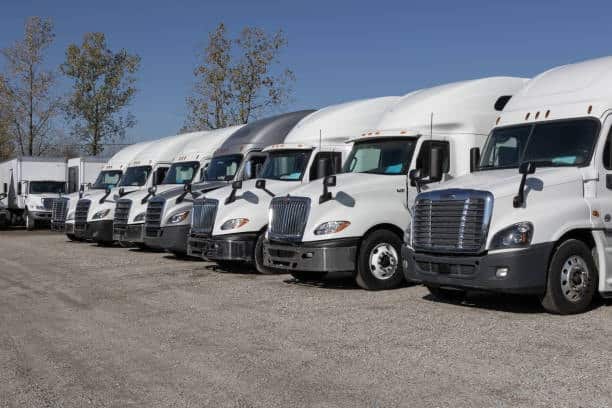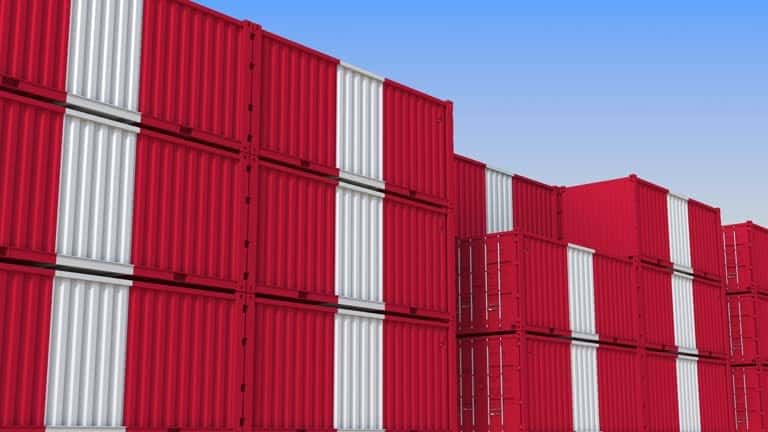A fundamental decision exists for businesses that need freight shipping services between SOC purchase and COC rental options provided by a shipping company . This selection applies to both freight containers, including shipping cargo container sizes, just like it applies to housing vehicles and clothing. Businesses that transport significant quantities of goods benefit significantly from purchasing shipper-owned containers, such as soc containers, instead of using carrier-owned containers, as coc containers belong to the logistics carriers. because this option gives them better supply chain management and reduced expenses and more efficient operations.
provides knowledge about worldwide shipping processes and emphasizes the need for shipping companies to make smart logistical choices. This guide demonstrates the fundamental distinctions between soc and coc containers as well as their tactical benefits in the shipping industry alongside a test for SOC investment suitability for your company goals.
What is a Shipper-Owned Container (SOC)?

A coc container owned by a shipper functions as a freight box which an independent entity possesses rather than belonging to shipping carriers. Carrier-owned containers (COCs) maintain carrier ownership and serve different consignees as rental units but shipper-owned containers (SOCs) stay under single shipper control, highlighting the difference in container ownership . The shipper owns and manages the container by purchasing it and handling container maintenance and storing it but the carrier has restricted responsibilities to moving the container through transportation, often facilitated by container leasing agreements .collaborates with businesses to manage supply chain integration of SOCs resulting in global transportation efficiency with reduced carrier-related expenditures.
Where Are Shipper-Owned Containers Used?

The usage of empty container cargo containers and shipper-owned containers spreads between different transportation methods in a comparable way to carrier-owned containers. The majority of transport methods which work with Shipper-Owned Containers (SOCs) include the following above transportation methods :
1. Freight Ships
The principal method of transporting shipper-owned containers is through the maritime freight service. During global international trade, large cargo ships carry cargo containers and arrange multiple stacks of 20 to 40 foot metal containers on board. Through worldwide shipping network businesses implementing shipping containers as SOCs can efficiently reach their destination port and carry out their sea freight shipments without interruptions, thus avoiding port congestion .
2. Large Ground Transport
The majority of security operations centers move through both trucking networks and rail freight systems, often utilizing empty containers for efficiency . Heavy-duty trucks function as specialized machinery to carrier SOCs because of their heavyweight and are often part of container leasing arrangements . The transportation of SOCs by rail proves to be an affordable method for maintaining distance-based delivery operations, especially when considering the elimination of demurrage and detention charges particularly between international frontiers.
3. Aircraft Transport
Large specialized aircraft operators serve the market for transporting SOCs despite the common perception of air freight for lightweight consignments offered by a shipping line . Focus businesses that need speed in delivery and better cargo flow in international transportation through shipping lines should opt for this method while understanding its premium price tag, especially when shipping to distant or remote locations .
4. Intermodal Transit
Organizations need intermodal transportation because they transfer SOC shipments using a mix of sea shipping combined with rail, road, and air travel. The combining of various transportation methods for stable shipping cargo delivery through a container leasing company enables maximum cargo space and operational efficiency especially during transportation to isolated locations. logistics personnel assists businesses by managing effective intermodal shipping of SOCs.
SOC vs. COC: Key Differences Explained
SOCs along with COCs perform the identical role of cargo movement in standard shipments yet the organizations differ because of separate ownership frameworks. Here’s a detailed comparison of soc vs coc containers :
| Factor | Shipper-Owned Container (SOC) | Carrier-Owned Container (COC) |
|---|---|---|
| Ownership | Owned by the shipper/business | Owned by the carrier/logistics company |
| Usage | The shipper uses this equipment again for maintaining ongoing shipping requirements. | Rented out to various customers |
| Storage & Maintenance | Managed by the shipper | Carrier handles storage and maintenance |
| Costs | One-time investment with long-term savings | The rental expense contains periodic payments with the additional possibility of miscellaneous fees. |
| Flexibility | Greater control over shipments and schedules | The availability of carriers together with their individual rules apply to this system |
| Demurrage & Detention Fees | Avoided entirely | The storage period can invoke extra expenses which stem from delivery delays. |
Real-World Examples of Shipper-Owned Containers

Shipper-owned containers serve purposes for freight logistics and many common everyday situations when you own container . Here are a few examples:
- The glass bottles for milk delivery become customer property and follow a cycle between milk purchases.
- Standard moving containers belong to relocating persons who use professional moving services for transportation needs.
- Travelers keep their bags as personal items yet they must pay airlines for carrying their luggage during transportation. The airline is required to reimburse compensation whenever equipment or items are lost.
The shipping container SOC model demonstrates power to businesses because it provides ownership which leads to prolonged cost efficiency, particularly through eliminating container rental fees. and heightened control of freight management.
Is Buying a Shipper-Owned Container a Worthwhile Investment?

When determining whether to invest in Security Operation Centers, businesses must analyze their shipping requirements together with their freight forwarder destination needs for a freight container, including considerations of the container number . along with treatment of costs, including freight payment strategie . Your business should use these factors to decide whether SOCs will be an advantageous investment, particularly considering the potential for avoiding detention charges .
1. Long-Term Cost Efficiency
The price tag for buying an SOC between $1,300-$2,000 for containers owned freight containers of 20-foot containers and $1,700-$3,000 for 40-foot containers functions as an upfront expense but generates a cost benefit by removing the container rental fees and fees for detention and demurrage fees of rented COCs.
2. Ideal for Remote or Less Frequented Routes
The purchase of shipping-on-cargo containers enables you to cover remote areas or operate through lesser used shipping routes because it allows you to bypass carrier container shortages, unlike external container providers . Having shipping containers under your ownership gives you dependable access that eliminates any delivery delays stemming from supplier shortages for containers. The control over containers becomes critical for companies who ship to distant destinations through infrequently used routes because container access has proven challenging. Sole ownership of containers provides you with authority to maintain both the container state and condition thus enabling continuous usage and preventing unforeseen container-related problems. The ownership of your shipping containers enables you lower future expenses by eliminating rental and lease expenses because you have only invested in upfront acquisition along with sustainability maintenance.
3. Customization & Cargo Safety
The implementation of standardized operating procedures with an SOC allows businesses to modify their shipping containers for customized cargo management that promotes better safety and follows industry standards to meet stable shipping needs .
Through their partnership with individual or independent businesses companies can lease containers or purchase either new or used SOCs at favorable prices. to maximize their investment rewards. Companies that work with independent businesses secure flexible container leasing or purchasing deals which include new and used shipping-owned containers (SOCs) that fulfill their unique delivery requirements. Companies benefit from more affordable investing costs because the partnership system offers attractive prices for obtaining their own shipping containers. Businesses that invest in used or leased shipping-owned containers will find an affordable solution that supports long-term investment returns.
Optimize Freight Logistics 3PL Services

makes freight shipping complicated procedures simpler through its complete third-party logistics (3PL) solutions that erase time investment and reduce expense. Through our mastery of inventory control and worldwide shipping services and order execution processes we assist organizations to concentrate on expansion goals and lower their logistical costs.
Provides businesses with reduced rates as well as optimal shipping paths and enhanced fulfillment operations which enables them to achieve cost-effective international market expansion. Businesses that provide optimized shipping routes and lowered rates let their supply chain perform more effectively so they reduce expenses and deliver products faster. Fulfillment operations become enhanced and companies prepare themselves for effective international market entry while achieving cost-effectiveness during their expansion phase.
Shipper-Owned Containers FAQs
1. What is the difference between SOC and COC?
An SOC (Shipper-Owned Container) operates within private ownership, allowing businesses to utilize their own containers, whereas COC (Carrier-Owned Container) stays under logistics carrier control and receives rented out to consignees.
2. Who owns freight shipping containers?
Freight shipping containers may be assets of either shippers or carriers although carriers can also lease freight shipping containers to their customers. Rental of SOCs by businesses exists as an investment strategy to achieve elevator control and reduce freight costs for the cargo owner , yet freight carriers usually operate under a COC shipping leasing arrangement.
3. How much do shipper-owned containers cost?
SoCs exist in a price range of $1,300 to $3,000 based on their size along with their present condition. Buyers who purchase their own shipping containers reduce their operating expenses in situations when they encounter frequent demurrage fees and carrier restrictions.
Conclusion

The strategic purchase of shipper-owned containers (SOCs) brings substantial benefits to logistics operations of businesses, especially in remote locations . Through ownership of their own containers, shipper-owned containers (SOCs) companies overcome rental expenses and decrease demurrage fees while gaining control of their supply chain operations compared to the carrier’s container fleet . Businesses searching for optimized shipping procedures should view the initial investment as worthwhile because operational freedom and reduced costs offset its initial high value.
Our company focuses exclusively on freight logistics and supply chain solutions because we lead individual or independent businesses through international shipping complexities. Our expertise guarantees your shipments with the shipping company ll receive efficient handling together with customs clearance and secure delivery at affordable prices during market expansion or cost reduction initiatives. enables businesses to securely implement SOCs so they obtain improved supply chain autonomy and business revenue results.




